Now I remember.
Now I remember what a long offseason feels like.

Now I remember.
Now I remember what a long offseason feels like.
Hi again. Next in this series of teases for the May 1 release of Brothers in Arms: Koufax, Kershaw, and the Dodgers’ Extraordinary Pitching Tradition (pre-order now!) is a preview of “Part One: The Kings of Brooklyn,” focusing on the beginnings of the Dodger pitching tradition and running through the man who finished off the franchise’s first World Series title.
Every so often — frankly, all too often — I find myself drawn into a doozy of a debate on Twitter about the serial comma. Yes, really.
Also known as the Oxford comma, it’s specifically the comma that follows the penultimate item in a series: for example the second comma in “songs, tunes, and ditties.”
Usually, the serial comma is completely unnecessary, and consequently it’s almost completely absent from newspapers and nearly as much from magazines, outside of Old School holdouts like The New Yorker. (Not so much in books, I should note.)
Nevertheless, several people I respect, like and esteem are fervent advocates on Twitter, Facebook and the like for the serial comma, putting me in the odd, strange and divisive position of having to explain why I don’t want extraneous, supercilious and clunky punctuation in my writing.
Rather than re-explaining my position again and again on Twitter, I decided to put it here once and for all, so that I can simply point to this post and move on.
Eight years ago minus a day, I wrote the post “Why Lindsey Jacobellis rocks,” pouring out my joyful respect for how Jacobellis’ fun-loving response in the face of immense Olympic disappointment floored me in the best way.
Lindsey Jacobellis is my new role model. She threw herself into competition at a level few of us could possibly emulate, sacrificed so that she might be the best, and when that failed to yield the ultimate prize, instead of curling up in the fetal position, she had the self-esteem and presence of mind to appreciate the greatness of the effort and the joy of what she was part of, win or lose. I want my kids to be like her.
Four years later at Sochi, Jacobellis crashed and finished seventh overall. This video illustrates where Jacobellis’ state of mind was heading into 2018. To say the least, I was eager to see what would happen to her this time around.
A few of you — and I do mean a few, given that many readers have understandably moved on — might have seen the handful of posts here over the past couple of weeks and wondered, is Dodger Thoughts back?
And the answer to that is yes. And no. And I’m not sure.
Here’s something that might surprise you, because it surprised me — Chase Utley actually hit the ball well for the better part of 2017.
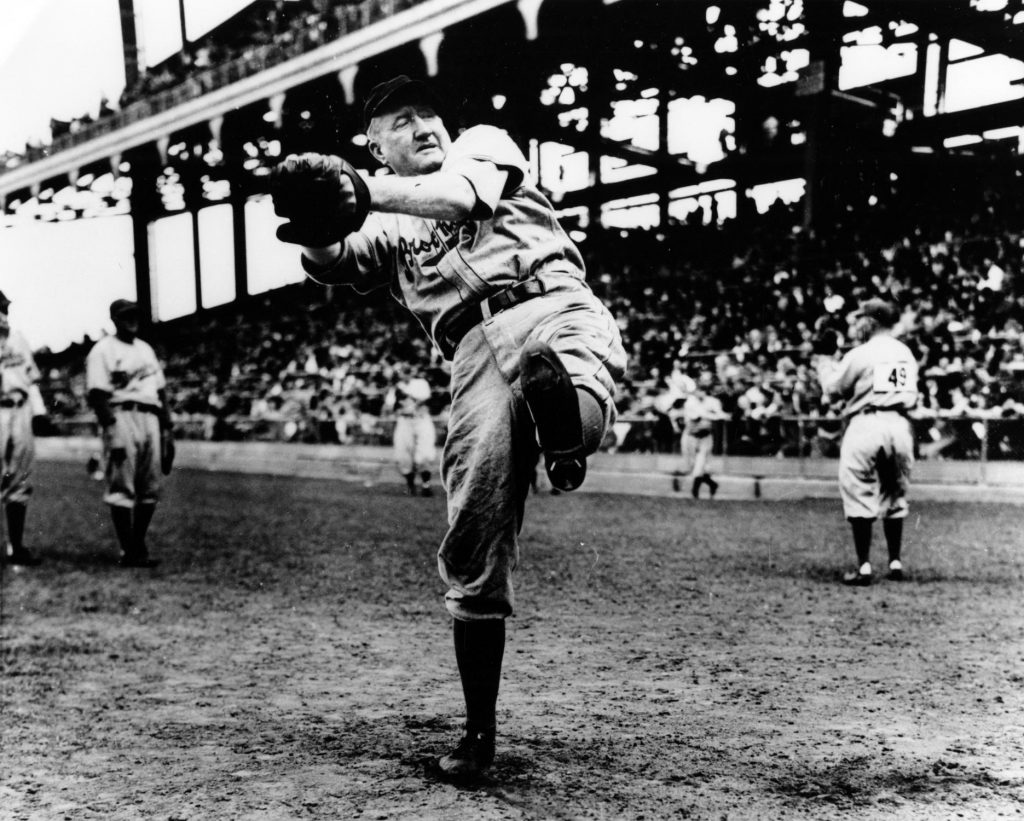
Dazzy Vance (National Baseball Hall of Fame Library)
Hi there! To get you warmed up for the May 1 release of Brothers in Arms: Koufax, Kershaw, and the Dodgers’ Extraordinary Pitching Tradition (pre-order now!), from time to time I want to share some behind-the-scenes tidbits about, for lack of a better phrase, “The Making of Brothers in Arms.” Think of these as if they were the DVD extras. Ideally, you’ll find them of interest even without the book in your hands.
Well, this was a good time — and really fun to play out on Twitter over the course of the weekend. In case you missed it there, I’m bringing it here. Keep scrolling …
In January 1980, we got our first VCR. About a month later, I set up a recording for what sounded like might be an interesting hockey game. pic.twitter.com/DJTq1P4xLK
— Jon Weisman (@jonweisman) February 11, 2018
So by all appearances, Matt Kemp — the once prodigious if not prodigal son –is going to Spring Training at Camelback Ranch, and it got me wondering about how complicated is the composition of the Dodger roster.
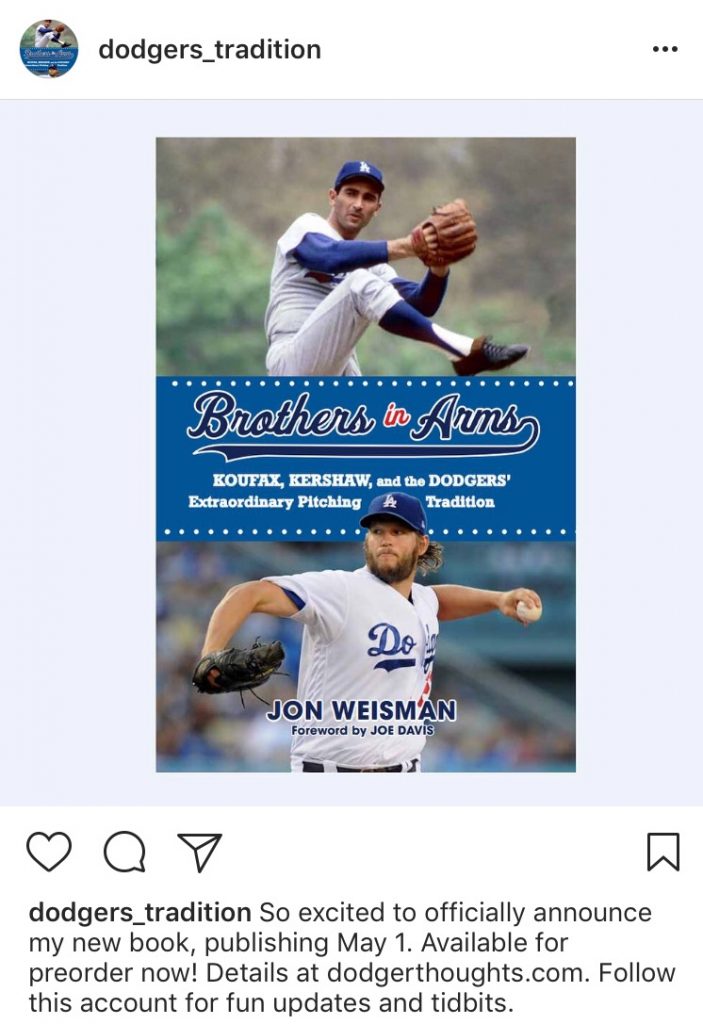 As another means of keeping you updated and spreading good cheer about my upcoming book — Brothers in Arms: Koufax, Kershaw, and the Dodgers Extraordinary Pitching Tradition — I’ve created a new Instagram account with the handle @dodgers_tradition. There, I plan to share not only book-related news, but fun historical tidbits, behind-the-scenes extras and more about the Dodgers to get you excited not only about the book but the upcoming baseball season. Enjoy!
As another means of keeping you updated and spreading good cheer about my upcoming book — Brothers in Arms: Koufax, Kershaw, and the Dodgers Extraordinary Pitching Tradition — I’ve created a new Instagram account with the handle @dodgers_tradition. There, I plan to share not only book-related news, but fun historical tidbits, behind-the-scenes extras and more about the Dodgers to get you excited not only about the book but the upcoming baseball season. Enjoy!

I can’t tell you how excited I am to share this news: Triumph Books has officially scheduled a May 1 publication date for my new book, Brothers in Arms: Koufax, Kershaw, and the Dodgers’ Extraordinary Pitching Tradition, and it’s ready and available for pre-order at sites including Amazon, Barnes & Noble and Triumph.
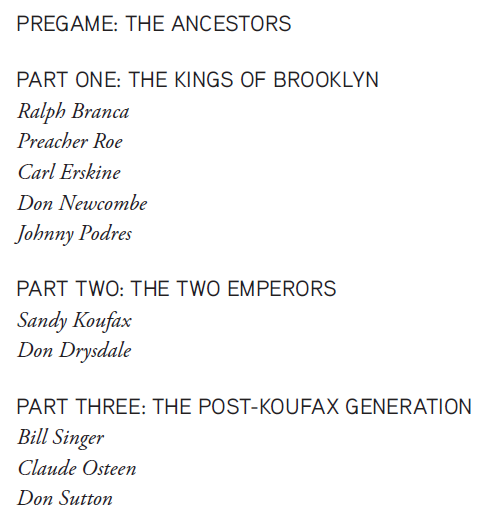 To paraphrase a famous saying, everybody talks about the Dodger pitching tradition, but nobody’s ever written anything about it — not a book, anyway. So beginning while I was still working for the Dodgers, I did the interviews and research that ultimately led to this fascinating and comprehensive journey through the formation and flowering of that tradition, from its birth to its current heights in the form of a certain left-hander wearing No. 22 in Los Angeles.
To paraphrase a famous saying, everybody talks about the Dodger pitching tradition, but nobody’s ever written anything about it — not a book, anyway. So beginning while I was still working for the Dodgers, I did the interviews and research that ultimately led to this fascinating and comprehensive journey through the formation and flowering of that tradition, from its birth to its current heights in the form of a certain left-hander wearing No. 22 in Los Angeles.
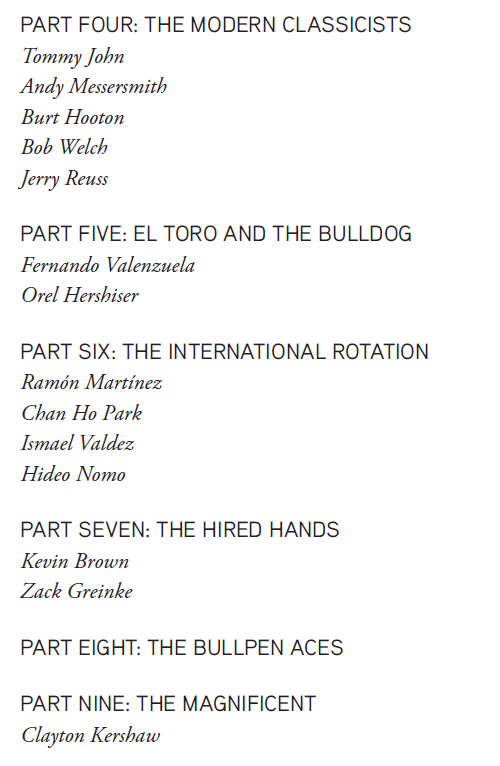
Starting with the earliest days of baseball in Brooklyn, Brothers in Arms lays out how a scattershot franchise, occasionally and almost coincidentally graced by great hurlers, became a focused organization generating superb pitchers almost at will. Divided into nine parts (I was tempted to call them innings), the book takes a deep dive into the exploits of the most important pitchers to wear the Dodger uniform since the pitching tradition began to take hold near the end of World War II.
With each chapter, I tell the story of how each athlete came to be the type of pitcher (and personality) that he was and place their accomplishments into context, individually as well as in the pantheon of Dodger and baseball history. I wanted to bring to life those who pitched too long ago for contemporary fans to have seen, and provide new insight into those who are more familiar. To do so, I conducted more than 25 interviews with names from Carl Erskine to Clayton Kershaw, and worked my way through thousands of pages of books, periodicals and websites.
Each chapter became a portrait of a pitcher that stands on its own — you can feel free to jump around the 384-page book if you like — but also holds a specific place in the narrative of baseball and the Dodgers. In addition, several of the section introductions delve into less prominent but incredibly crucial contributors to the Dodger pitching tradition, including catchers, pitching coaches, managers, scouts and the front office.
While the Dodgers were rushing headlong toward the World Series in 2017, my free moments were largely spent diving into the past, working to tell the tale of Dodger pitching in the most meaningful way possible. I’m really grateful to those who spoke with me and helped me along the way, as well as Dodger announcer Joe Davis for writing the forward. I can barely wait for you to see the book, and am happy it will be out in time for Mothers’ Day and Fathers’ Day gifting, among other things. (However, I like to think it’s good for any occasion …)
Watch for more details to come, here at Dodger Thoughts, via my Twitter feed @jonweisman or on Instagram @dodgers_tradition. In the meantime, pre-order the book today!

Matt Luke speaks at the Dodger Thoughts picnic in Elysian Park on August 16, 2008.
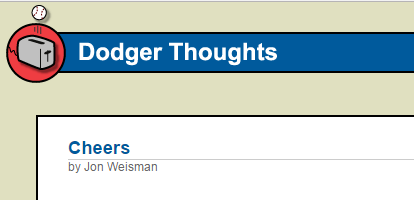 Today, the memory-bot at Facebook reminded me, is the anniversary of my Dodger Thoughts farewell from Baseball Toaster and arrival at the Los Angeles Times. Most of the other Toaster blogs wrapped things up on February 2, 2009 as well, with Ken Arneson putting the final, glorious bow on things two days later.
Today, the memory-bot at Facebook reminded me, is the anniversary of my Dodger Thoughts farewell from Baseball Toaster and arrival at the Los Angeles Times. Most of the other Toaster blogs wrapped things up on February 2, 2009 as well, with Ken Arneson putting the final, glorious bow on things two days later.
It’s the eighth anniversary. Twice as much time time has passed than we spent at the Toaster, which was officially born on March 8, 2005. For 47 months, I’d put what the group of us did at the Toaster up against anything else on the Internet. We were fun, thoughtful, innovative, occasionally brilliant and in many ways ahead of the curve. And particularly remarkable in this feisty day and age, the Toaster in general and Dodger Thoughts in particular had perhaps the best community I think the Internet has ever seen. We showed how strangers could come together online and chat, debate, disagree — and still be friends in the end. I know for certain that several deep, lifelong friendships have been formed thanks to the Toaster comments section. Credit the no politics rule if you like, but even if we were arguing about the hot-button issues of today, I believe made online conversation something valuable that you could actually look forward to. Fortunately, the comments section lives on for the most part at True Blue L.A.
Despite being the sort who is often looking back and wondering about choices that I’ve made — I’m nothing if not a “Glory Days” guy — I don’t spend a lot of time thinking about the decision to leave for the Times. The lure of the Times (yes, it had a lure) was one thing, the potential exposure was another, the ability to start earning money through the site for my family of five was the biggest of all. Obviously, I could not have predicted the journey that followed, from the Times to ESPN Los Angeles, then to independence, then to the Dodgers themselves. And then, in the past year, came a period of near-dormancy while I adjusted to life at Showtime and worked on a book.
But the Toaster remains the Wonder Years of my baseball writing career. It becomes briefer the farther it goes into my rear-view mirror, but I’ll always cherish it. And though it probably could never resurrect the magic, this morning I dreamed of a comeback someday. It’s the reboot era, after all.
But, as they say, I digress. Anyway — and I’ll admit to the anniversary timing being a coincidence — this week I decided to do some sprucing up of the current version of Dodger Thoughts. Rare as I’ve been in here in the past year, it’s still my home away from home in a sense, and it had been six years since it had received a fresh coat of paint. So on this anniversary day, why not indulge?
If this offseason, the Dodgers followed up their National League pennant by signing free agents Rich Hill through 2019, Justin Turner through 2020 and Kenley Jansen through 2021 (not to mention adding a 39-homer-hitting first baseman in the process), everyone would be saying it was a huge haul.
That’s not an argument to stand pat for the sake of standing pat — nor is it to deny that a trade for a certain Miami outfielder had its appeal — but don’t think less of the Dodgers because they got a big part of their homework done a year ago.
And I have to say, I like the mix the Dodgers have for their outfield right now. Yasiel Puig, Chris Taylor, Joc Pederson, Kiké Hernández, Andrew Toles and Alex Verdugo all have considerable upside, with only Taylor arguably playing over his head in 2017.
Pederson, who won’t turn 26 until April, might well have had the same growth experience last summer that Puig had in 2016. Through the end of July, Pederson had a .359 on-base percentage, .481 slugging percentage and .840 OPS with a career-low strikeout rate, statistics that got lost in the shuffle when he hit the August skids. Then he came back and delivered an 1.186 OPS in 26 playoff plate appearances.
As an alternative platoon partner to Hernández, Verdugo had a .389 on-base percentage for Triple-A Oklahoma City, ninth in the Pacific Coast League (despite being its second youngest player), walked more than he struck out and boasts a plus arm. And before he ripped his knee ligament trying to preserve a Julio Urías no-hitter in April, Toles was tied for the Dodger team lead with five homers.
All due credit to Milwaukee, which led the NL Central at the All-Star Break and finished with 86 wins last year. By acquiring Christian Yelich and Lorenzo Cain in one afternoon, the Brewers have definitely made their 2018 a lot more interesting.
But it’s not nothing that the Dodgers are adding Verdugo and Toles to an outfield that, following Toles’ injury, won 95 games without them. In adjusted OPS last year, the Dodgers finished second in the NL (behind now-depleted Miami) with an offense whose two oldest starters were only 30 and 32. You always look to improve, but they remain in good shape.
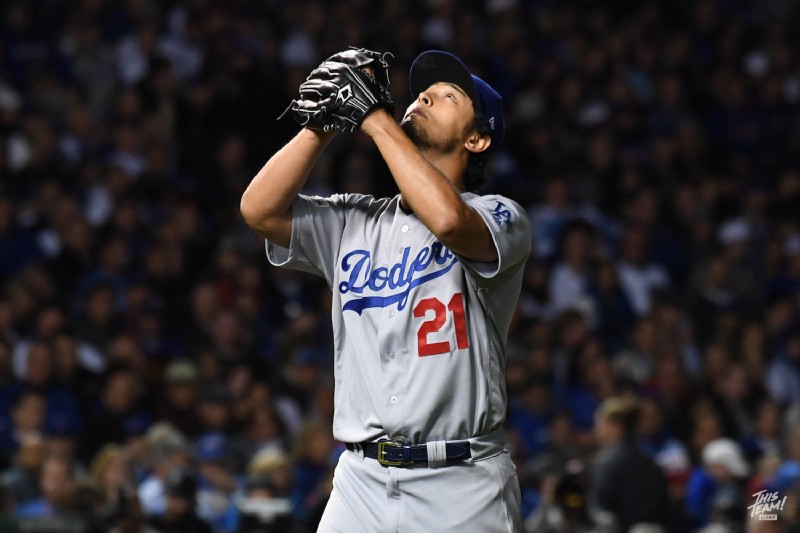
Yu Darvish during the Dodgers’ NLCS Game 3 victory. Before his World Series downfall, Darvish allowed two runs in 11 1/3 innings during the NL playoffs, for a 1.59 ERA. (Jon SooHoo/Los Angeles Dodgers)
The anniversary of the Dodgers’ most recent World Series title reaches Carousel this year, and if you’re old enough to get a reference to Logan’s Run without thinking about the team’s current second baseman crossing the plate, perhaps only then are you old enough to remember what it actually felt like to be a Dodger fan triumphant.
To be honest, I don’t think very many people, young or old, want to hear about 1988 anymore, not at least until it has been succeeded by something new. No one holds a grudge against 1981, 1965, 1963, 1959 or 1955, for they were all followed up in due course (though to be honest, the gap between ’65 and ’81 seemed pretty pronounced at the time). But ’88, though it will always be a treasure, has been nearly wrung dry.
At the same time, 1955 is instructive, because it came after an eternity of falling short. The Bridegrooms were bridesmaids for more than half a century. Every unhappy ending through 1954 only increased the desperation for the championship, yet nothing made that championship any easier to come by.
6️⃣0️⃣ pic.twitter.com/he6fYZa7zI
— Los Angeles Dodgers (@Dodgers) January 23, 2018
On Tuesday, the Dodgers unveiled the logo celebrating the franchise’s 60th anniversary in Los Angeles, throwing into sharp relief how 1988 cleaves era into two even but unequal parts — the 30 years with nine World Series trips and five titles, and the 30 years with none and none. That is some top-heavy tenure (or if you’re ruefully inclined, bottom-heavy torture) at Chavez Ravine.
But here’s the critical point to take forward into 2018. Our angst, our annoyance, our impatience, our cynicism, our frustration, our exasperation … none of it means anything. There hasn’t been a year in which anyone hasn’t been full-throttle dying to win the World Series.
This isn’t a Thirty Years War. This is an annual war, fought each of the past 30 years.
You can argue that each fall has been more painful than the last, but that doesn’t change what the Dodgers’ mission has been each spring. Despite the scattered criticisms you might find of the current front office, the Dodgers are completely committed to winning it all. Unfortunately, commitment doesn’t mean that your every move is guaranteed to work.
One offseason theme, for example, has been that if the Dodgers were serious about winning, they would have acquired Justin Verlander instead of Yu Darvish, conveniently ignoring the widespread euphoria that followed the Darvish trade. In addition, Darvish isn’t in position to start in the World Series if so many other things hadn’t gone right, including his satisfying playoff performances on the road at Arizona and Chicago.
While Darvish did get blown up twice by the Astros (via tipped pitches or ripped pitches, depending on whom you believe), Verlander was unable to close out either of his two World Series starts as well. That’s not to suggest that Darvish didn’t put the Dodgers behind two gigantic 8-balls, but to remind that baseball is a uniquely peculiar sport, the most unpredictable of them all, less a national pastime than a national butterfly effect.
If one thing doesn’t go wrong, it may well be another, even less expected calamity, such as the best reliever in baseball throwing his worst possible cutter.
Management cannot bulletproof a baseball team. Management can only do its best to maximize the team’s chances for winning — and no one looking objectively at the Dodgers’ daily roster manipulations can accuse their front office of trying anything less than the maximum.
Instead of taking bitterness from the past five Octobers and one November, take encouragement. Never in the era of division play have the Dodgers been more consistently in the thick of the race. We remember 1988. But we should also remember the 18 different seasons since then when the Dodgers didn’t make the playoffs at all, including seven in a row during the 1997-2003 seasons.
From 1989-2003, the Dodgers won zero playoff games. From 2004-2012, they won nine. From 2013-17, they won 23. And last year, they not only finally returned to the Fall Classic, they came within a laugh and a tear of winning the damn thing. Short of the World Series title — and no one is for a moment arguing that the title isn’t the paramount goal — this has been a golden era of Dodger baseball unmatched in more than a generation.
The Dodgers aren’t there yet. It’s a familiar refrain. But don’t make 2018 about 1988. Don’t carry that burden on your shoulders. Let those seasons go. That’s how you win the Thirty Years War.
The coming season is its own beast — ferocious, like they all are, but singular, filled with promise, alive until the very last breath, possibly terminal, but hopefully eternal.
Every baseball season compounds pleasure and pain with intensity. In that chemistry, all that changes is the mix. What – the older among us had to be reminded, the younger had to learn for the first time – would playing in the World Series make different?
We could imagine easily enough the euphoria of ultimate victory, and we could wonder if defeat would cause depression or devastation. But passing through that window, how would it feel? Keep in mind: It had been 29 years since the Dodgers had won a World Series, but it had been 39 years since they had lost one.
Let’s pause and remember, for a moment, how we got here. The record-setting run to the best record in baseball, cozying up to the greatest mark of all time, legitimately raising the question of whether this would be the best team ever if it won the World Series, if if if, before a 17-day impersonation of Job caused us to question the true nature of baseball good and evil. A smidgen of run-of-the-mill stability led us into the fresh thrills of the postseason.
Remember that just beating Arizona in the National League Division Series, let alone sweeping the Diamondbacks, was an achievement – many thought the first landmine would be more than sufficient to waste the Dodgers. Then Chicago, 12 months earlier a Waterloo, transformed into a wonderland. Justin Turner hit a glorious walk-off homer on the anniversary of Kirk Gibson’s. Three games later, Kiké Hernández, a semi-regular as famous in baseball for his banana costume as anything else, knocked three home runs in a single evening, and suddenly, the nearly holy grail found its way into our grasp, a demon-exorcising National League pennant, birthing our ride into the mystical land.
The unknown awaited.
Speaking for myself, little was more terrifying for Game 1 of the 2017 World Series than the drive there, bounded by my oldest son’s 3:15 p.m. release from school and the 5:09 p.m. Dodger Stadium first pitch, with 14 miles of the densest daytime Los Angeles traffic teeming in between, all of it in the 105-degree asphalt jungle that wilted the air conditioning in our 2006 Honda Odyssey. Barely was there any time between our arrival in our seats and Clayton Kershaw’s initial strike for me to focus entirely on the stress between the baselines, and with the underdog’s underdog, Chris Taylor, homering on the first pitch thrown to a Dodger World Series batter since Alfredo Griffin grounded to third in the ninth inning of Game 5 in 1988, joy took hold before tension had a chance to lay down a finger. Houston tied the game but never led, Turner hit his then-usual postseason home run, the Dodger bullpen followed its blueprint, and just like that, a 3-1 Game 1 triumph. No Gibson, no problem. Less than an hour after witnessing the final pitch from the Reserved Level, even with our car parked at the opposite end of Chavez Ravine far beyond center field, my family was home, safely, victoriously.
With Game 2, whose schizophrenic late-inning craziness needs little elaboration from me, the true experience of the 2017 World Series really began. There’s a moment in Hamilton when Thomas Jefferson comes to understand the incomprehensible reality behind a sordid scandal involving Alexander and says, softly thunderstruck, My God. As I watched Game 2 and the next four on television, those words reverberated in near non-stop echo.
All the home runs and the comebacks complete and incomplete in Game 2: My God.
Yu Darvish’s meltdown to start Game 3: My God.
The chest-knotting tie in Game 4, unbroken until the five-run Dodger ninth: My God.
And Game 5, the game of 4-0, 4-4, 7-4, 7-7, 8-7, 8-11, 9-11, 9-12, 12-12, 12-13 – Why do you hit like you’re running out of time? – the game in which a future first-ballot Hall of Famer stood three competent innings from sealing his postseason legacy, the game in which a 2017 Dodger team could have practically assured its place in Nirvana?
My God, and then some. Death doesn’t discriminate between the sinners and the saints, sings Hamilton’s complicated frenemy, Aaron Burr. It takes and it takes and it takes.
Typically, after a Dodger loss, I stew a very short time. I always believe in tomorrow. Even after Game 2, which anyone could reasonably say was a disastrous loss, my disappointment was quickly supplanted by my awe at the insanity. But Game 5 left me in a fog that shrouded and confused me beyond what I can recall feeling before.
Game 5 buried me. My hopes lay in reincarnation.
For Game 6, I was back in my car, though not on the way to Dodger Stadium. I spent the early and middle innings driving through Halloween night rush hour in Los Angeles to retrieve my daughter from her late rehearsal for the school musical and bring her home. It was with me in transit that the Dodgers withstood an enormous threat from the Astros in the top of the fifth and then rallied in the bottom of the sixth, and I exulted so quietly, with the tiniest of fist pumps, because Young Miss Weisman, now 15 years old, is at the place where she finds my devotion to this sport unnerving almost to the point of embarrassment. But home for the final two innings, I saw Joc Pederson’s homer, I savored Kenley Jansen’s domination, and as the clock neared midnight on October, I began preparing for Game 7.
For my first November baseball game, we didn’t mess around. More than an hour before the game began, I was in my seat with a hot dog. Time to take in the atmosphere and share it through Instagram and Facebook and Twitter and e-mail. It’s really the atmosphere, after all, that draws you to the game, the desire to play a part, however small in the chorus, because not even the best seats get you as close as the television.
In fact, when the game began, what I had sacrificed in favor of that atmosphere was quickly apparent. Our seats far, far down the right-field line put us in a realm filled with hope but miles from the action, and with slow-signaling home-plate umpire Mark Wegner making his strike calls on the backbeat, it seemed as if news of the game was coming by telegraph. A white sphere landed in a far-away field before we had barely inhaled the game’s first scent, and it was a double for George Springer. An Alex Bregman grounder went wide, wide of first base, Cody Bellinger threw off-balance, and like a newsreel of the war, we learned the casualty of a 1-0 Houston lead. Bregman then ran away from us, stealing third base, and then just as quickly scored on another grounder to Bellinger.
In a World Series like this one, I was quick to despair but slow to lose hope, especially when Houston starter Lance McCullers Jr. allowed a leadoff double by Taylor and then began hitting nearly every other Dodger batter with a pitch. Two outs into the bottom of the first, the bases were loaded for Pederson, the afterthought when the postseason began who was now one hit from going toe-to-toe with Springer for potential World Series MVP honors.
Pederson hit the ball sharply but indiscreetly, into an inning-ending forceout. Forlornly, Los Angeles took the field behind Darvish to start the top of the second, and the third run of the game scored in slow motion, Brian McCann plodding home from third base on a wet newspaper slap from McCullers that sent the ball drifting with infernal apathy toward Dodger second baseman Logan Forsythe.
Do people remember that the Springer home run that destroyed Darvish and made the score 5-0 came on a 3-2 pitch. I’ll not soon forget the fear as Springer came up to the plate with the entire season at risk, but the first five pitches Darvish threw in that at-bat took no foothold in my mind. All was obliterated by the punishment Springer laid out on the last.
Before Game 7 began, I fully understood the case for starting Kershaw and didn’t particularly disagree with it, but nor have I ever second-guessed the decision to open the game with Darvish, who after all had successful outings in the two previous playoff rounds. As bad as Darvish looked in Game 3, it struck me as aberrative. It didn’t make sense to assume he would do worse on four days’ rest than Kershaw on two days’ rest — and since Kershaw wasn’t going to go the distance in any circumstance, why not use the experience he had picked up coming out of the bullpen in the 2016 NLCS to your advantage?
Instead, the choice will be remarked upon for years. Nearly 40 years after the last big elimination-game controversy involving a Dodger starting pitcher, Darvish became a Dave Goltz for a new era, the outsider who usurped the spotlight moment from the homegrown prodigy and pratfalled, even if Darvish was dimensionally more talented than Goltz, even if people always forget that for Fernando Valenzuela to have started the NL West tiebreaker at the end of the 1980 season, he would have been pitching on zero days’ rest.
The game still was not over. It couldn’t be, right? Not in a Series as magnificent as this one, not without Rocky landing one more flurry of punches on Apollo. In the bottom of the second, Taylor came to the plate with two runners on against the wobbly McCullers. Taylor lined the first pitch 96 mph, but as with Pederson’s 97 mph grounder in the first, it found nothing but glove. Two hard-hit balls by the Dodgers with five baserunners on, and zero to show for it.
The sad march continued. In the third inning, after a Corey Seager leadoff single, Turner was hit by a pitch for the second time — the fourth HBP of the game by McCullers. The last time a pitcher hit four batters in a game at Dodger Stadium, Orel Hershiser was discovering that his career was over. But again, no one scored.
Wounded, the crowd kept swaying, kept stomping, but the dominoes kept falling, falling faster, crashing one atop another, the tumbling interrupted only by an RBI single by 12-year Dodger veteran Andre Ethier in what many understood to be his last at-bat in baseball’s most beautiful uniform. Unlike the cyclonic Game 5, Dodger fans stood face to face with a steady wall of doom for hours before Game 7 ended.
Ethier was the final Dodger baserunner of 2017. The remaining 11 batters all made outs. The last, a grounder to second by Seager, brought a silence to Dodger Stadium unlike anything I have ever experienced at the conclusion of a major-league baseball game. Had the victors been the ALCS finalist Yankees instead of the Astros, no doubt thousands of chest-thumping Bronx Bomber fans would have taken over Chavez Ravine with their whoops. But with Houston represented so sparsely in the stands, I swear I could hear the cheers of the Astro players cut through the quiet as they swarmed the field to celebrate in the ballpark they had turned into a morgue.
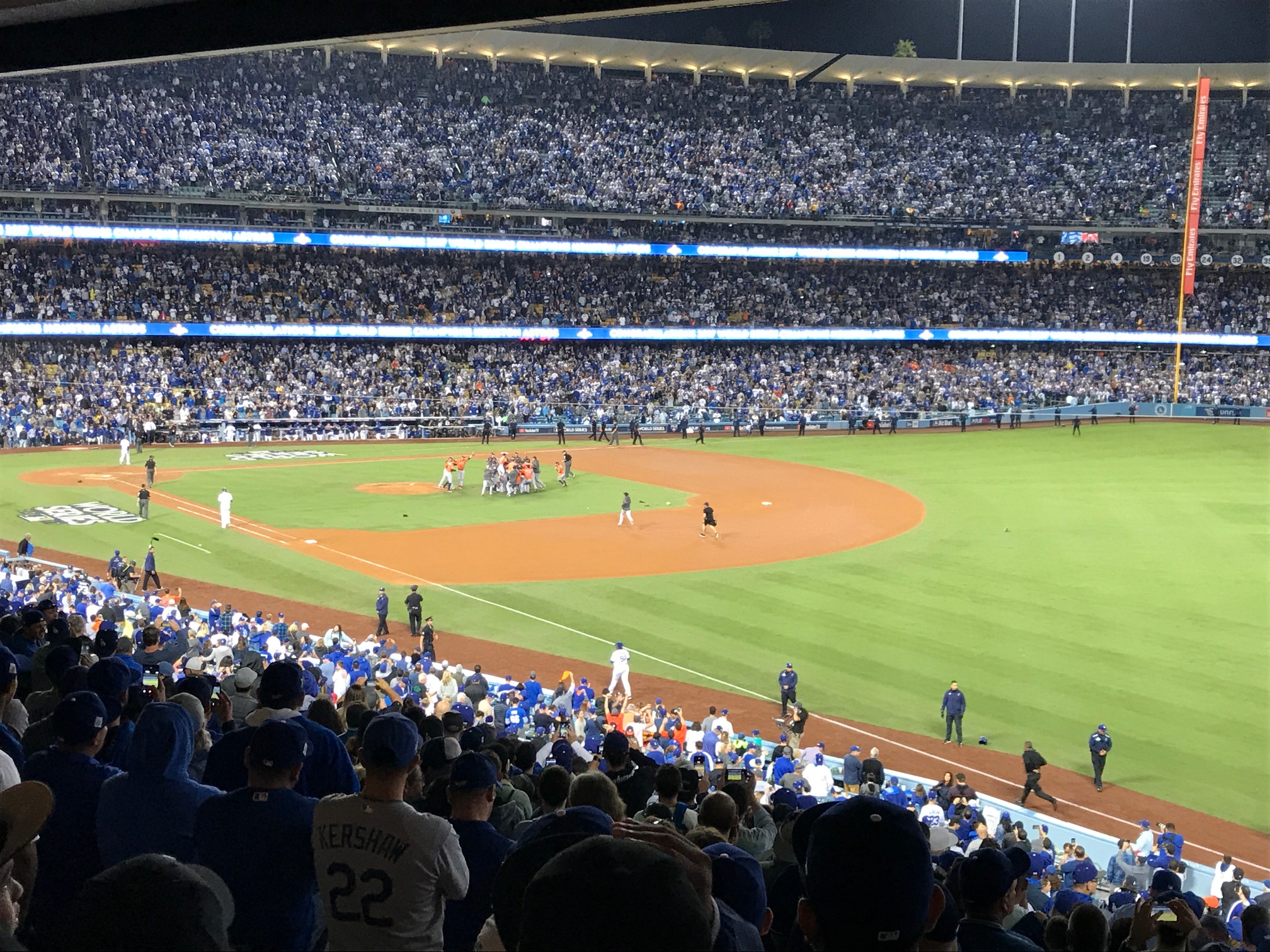 It takes so much out of you, a baseball season, never more so than during a World Series run. If you didn’t know it before, you know it now. What does it mean to lose a World Series? It means you don’t take that exhaustion anywhere except home. You toss it in the trash if you choose. Or, you own it, and you take pride in it, you treasure it, even if it is nothing like joy, nothing like euphoria, nothing like pounding your chest and shouting to the heavens.
It takes so much out of you, a baseball season, never more so than during a World Series run. If you didn’t know it before, you know it now. What does it mean to lose a World Series? It means you don’t take that exhaustion anywhere except home. You toss it in the trash if you choose. Or, you own it, and you take pride in it, you treasure it, even if it is nothing like joy, nothing like euphoria, nothing like pounding your chest and shouting to the heavens.
You think about coming so close, and your breath draws heavy and sad.
Come the next breath, you are stronger.
And we keep living anyway. We rise and we fall and we break and we make our mistakes and if there’s a reason I’m still alive when so many have died, then I’m willing to wait for it.
Page 20 of 379
What happens when three old friends in crisis fall into an unexpected love triangle? In The Catch, Maya, Henry and Daniel embark upon an emotional journey that forces them to confront unresolved pain, present-day traumas and powerful desires, leading them to question the very meaning of love and fulfillment. The Catch tells a tale of ordinary people seeking the extraordinary – or, if that’s asking too much, some damn peace of mind.
Brothers in Arms excerpt: Fernando Valenzuela
October 22, 2024
Catch ‘The Catch,’ the new novel by Jon Weisman!
November 1, 2023
A new beginning with the Dodgers
August 31, 2023
Fernando Valenzuela: Ranking the games that defined the legend
August 7, 2023
Interview: Ken Gurnick
on Ron Cey and writing
about the Dodgers
June 25, 2023

Thank You For Not ...
1) using profanity or any euphemisms for profanity
2) personally attacking other commenters
3) baiting other commenters
4) arguing for the sake of arguing
5) discussing politics
6) using hyperbole when something less will suffice
7) using sarcasm in a way that can be misinterpreted negatively
8) making the same point over and over again
9) typing "no-hitter" or "perfect game" to describe either in progress
10) being annoyed by the existence of this list
11) commenting under the obvious influence
12) claiming your opinion isn't allowed when it's just being disagreed with
1991-2013
Dodgers at home: 1,028-812 (.558695)
When Jon attended: 338-267 (.558677)*
When Jon didn’t: 695-554 (.556)
* includes road games attended
2013
Dodgers at home: 51-35 (.593)
When Jon attended: 5-2 (.714)
When Jon didn’t: 46-33 (.582)
Note: I got so busy working for the Dodgers that in 2014, I stopped keeping track, much to my regret.
Powered by WordPress & Theme by Anders Norén